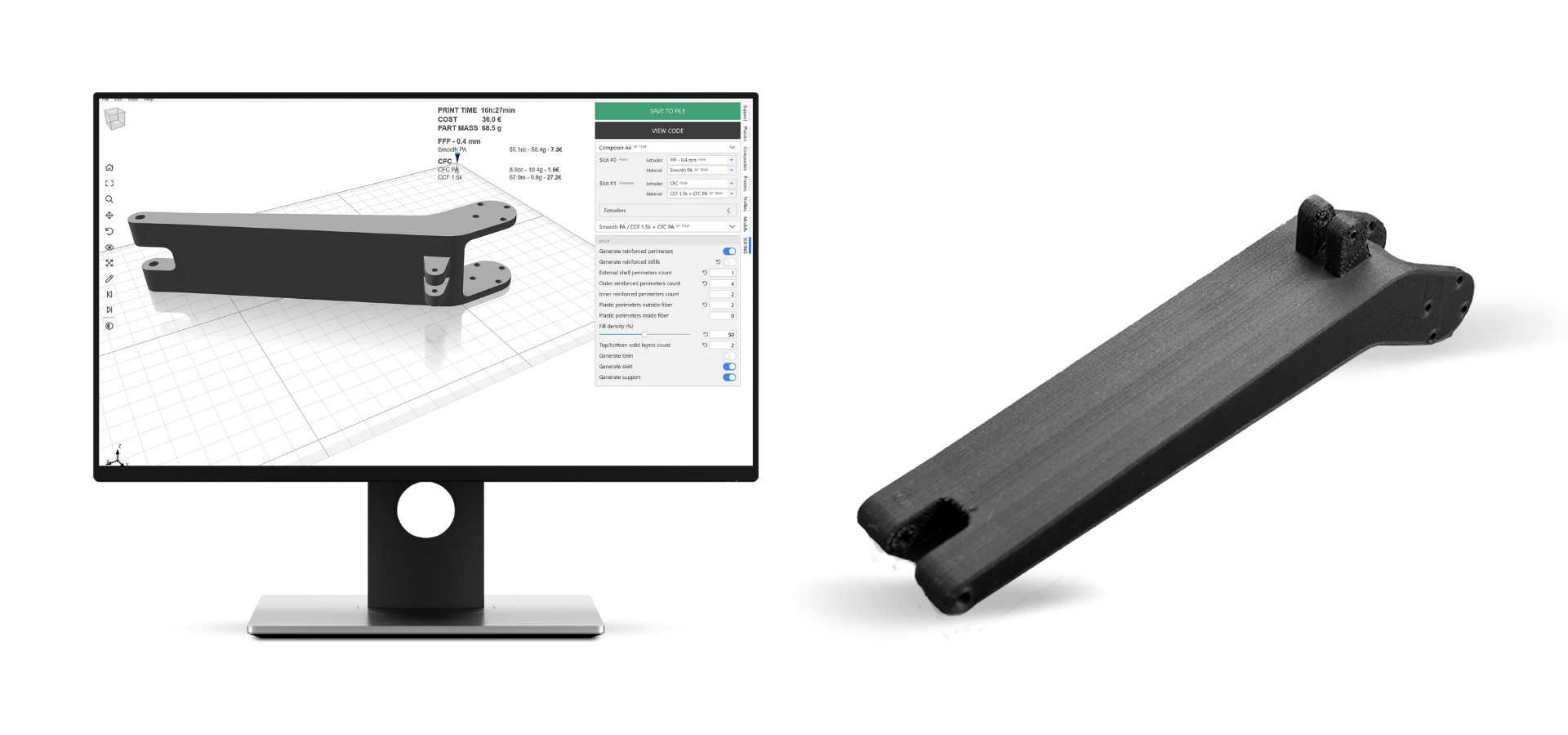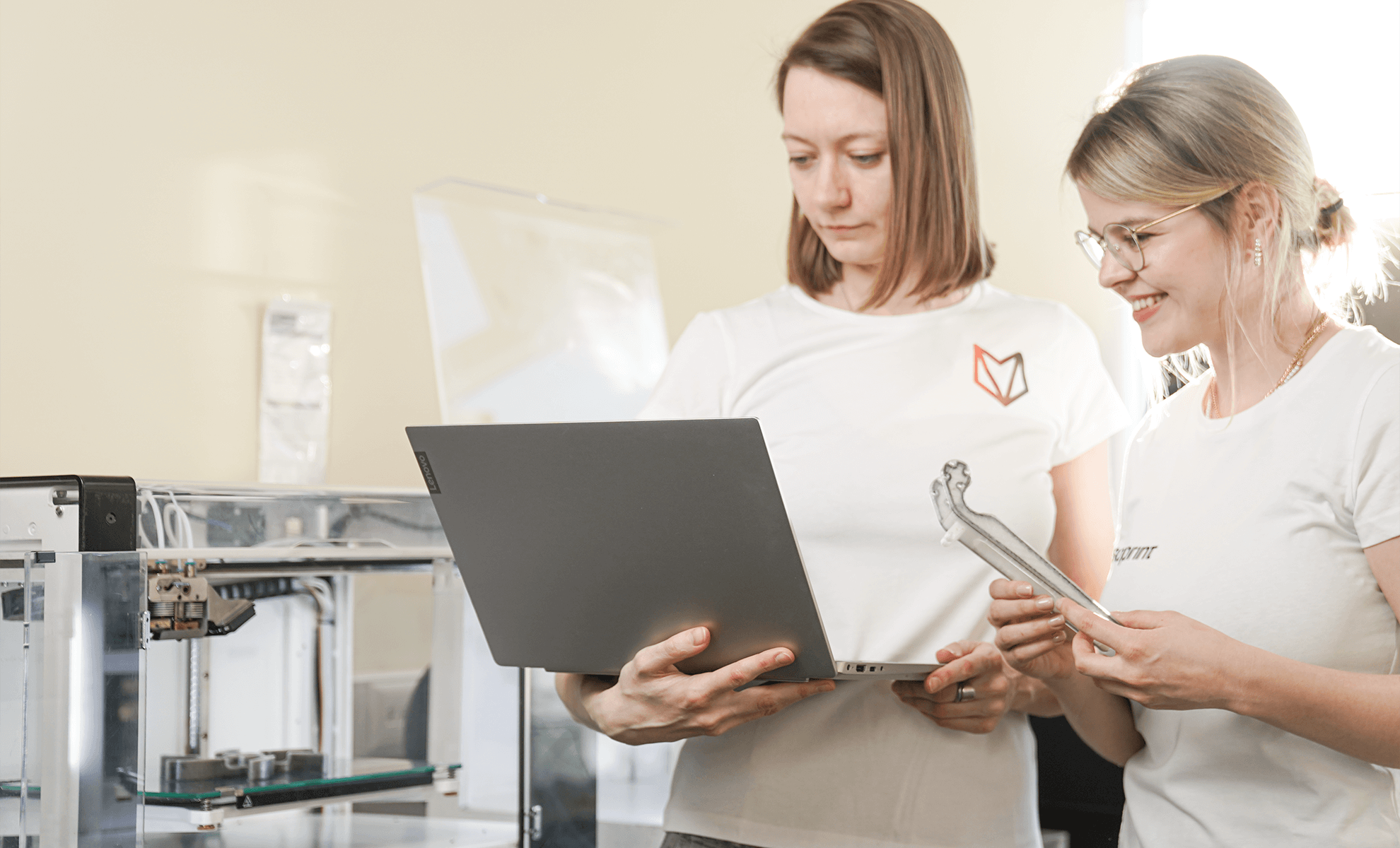The advantages of continuous fiber-reinforced composites pave the way for numerous industrial applications where mass counts. Aerospace is one of such industries, as extra mass creates a lot of expenditure due to fuel consumption. In 2021, we 3D printed lightweight parts for a lunar rover, that was the winner of a worldwide space application hackathon. Our solution included remodeling two suspension parts — a wheel mount and control arm — for layering reinforcing fibers and ensuring strength and durability.

But there is no limit to perfection, and we keep deploying new approaches and materials to different use cases and applications. This time, we reprinted the Lunar Rover parts with our new material Clear PETG. Our goal is to further enhance the design to reduce the weight and increase efficiency even more.

Back in 2021, we used Smooth PA and Composite Carbon Fiber (CCF), changed the design for reinforcing with fibers and chose minimal infill density – 10% (see the screenshot below). It helped to meet the requirements and limitations: the max weight for the rover is 4 kg, and the parts need to be under 100 g.

This time, we tested our new material pair Clear PETG + CCF and changed the geometry even more to cut out the areas that are not loaded. See the new model below:

As a result, we were able to reduce the cost and material usage while keeping the part’s full functionality, which is important for aerospace applications where performance and cost are major factors.

In the table below you can see the new benchmark compared with the previous results and projected values for a plastic with even lower density – LW-PLA. It is included specifically to illustrate one of the core advantages of coextrusion technology: flexible material choice. With the right preparation and settings, a lot of plastics can be combined with continuous fibers and thus exhibit excellent physical parameters together with modest mass and production cost.
| Material | Smooth PA | Clear PETG | LW-PLA* |
|---|---|---|---|
| Weight | 64 g | 66.2 g | ~41.6 g |
| Cost | € 21.6 | € 12.6 | ~€10 |
| Density | 1.06 g/cm3 | 1.3 g/cm3 | ~0.82 g/cm3 |
Flexibility and control with anisoprinting
Design solutions and material flexibility give us control over many physical parameters: geometry, weight, tensile strength, working temperature range, environment resistance, density, etc. Thus we control the performance of the part, which is one of the key features of anisoprinting: with the numerous combinations of geometries, materials, and properties, users are able to create necessary components that achieve the needed goals with selected methods, and all within one single automated technology.
The example above shows two different materials and designs that bring different results; with more components, load maps, and goals there will appear more options and possible choices, thus engineers will be able to adjust them perfectly to produce highly performing mechanisms along with cutting costs and improving business parameters.
WANT to start producing lightweight carbon components for aerospace? Get in touch with our team:
[hubspot type=”form” portal=”25897477″ id=”74952842-0877-4fd8-9c76-a728c5860746″]
